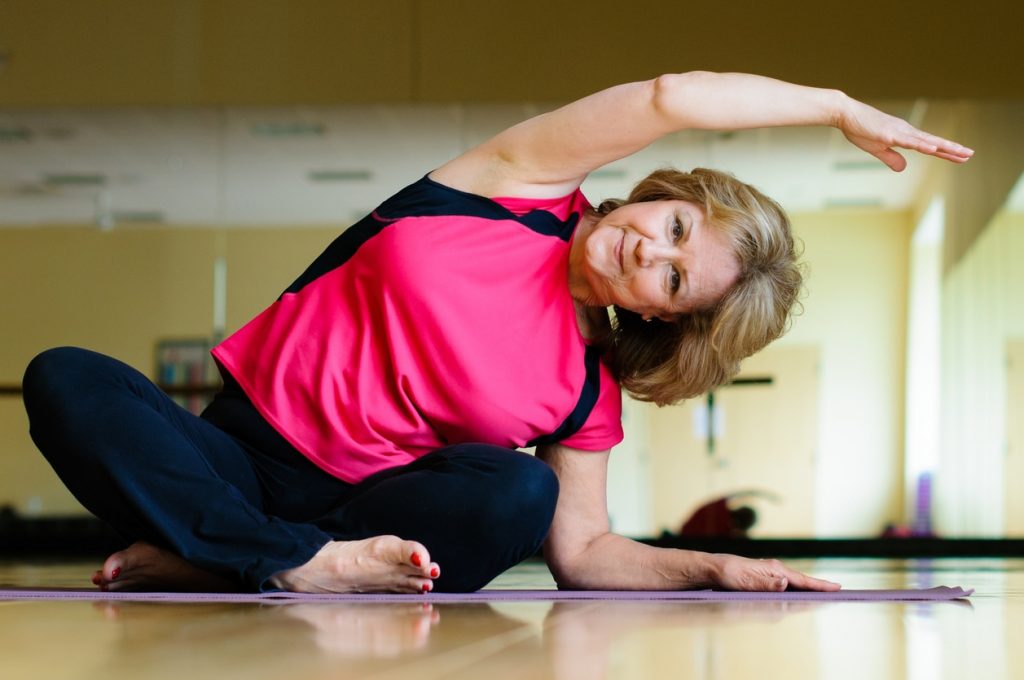
Talk to your doctor before changing your activity level. You may need to make important modifications based on medication you are taking, surgery you have had, or side effects you are experiencing. You may benefit from the input of a physical therapist or exercise specialist in developing an activity program. Remember, take the time to get your care team involved. Activity should support your recovery, not set it back.[/breakout] Fatigue and muscle weakness are the top issues for people living with NET cancer. One way to increase your energy level is by increasing your activity level. Research shows there are many benefits of including activity in your daily schedule and survivorship plan.
Physical activity offers a range of benefits to those living with cancer. It can:
- Reduce anxiety and depression
- Improve sleep
- Support bone and muscle health
- Improve physical health
- Improve balance
- Enhance quality of life
Studies have found that, in some cancer types, exercise reduces recurrence, progression, and improves prognosis in cancer survivors.
Start Small
You are not training for competition. Slowly and safely add activity to your day. This can be as easy as walking to the mailbox and back. Or if you are up to it, walking the dog around the block.
(no change in breathing)
- Slow walking
- Slow biking
- Light housework
- Light gardening
- Fishing
- Golf
- Bowling
- Easy resistance exercise such as resistance bands
- Stretching
- Gentle or chair yoga
Moderate Exercise
(Slight increase in breathing. Can still talk easily)
- Brisk walking
- Bike riding with some hills
- Water aerobics
- Dancing
- Ball sports like tennis, softball
- Lifting weights
- Badminton
- Downhill skiing
- Swimming
- Dancing
Vigorous exercise
(Breathing hard, not able to hold a conversation)
- Running
- Race walking
- Aerobics
- Stair climbing
- Soccer
- Basketball
- Cross-country skiing
During treatment
- Light activity 5-10 minutes/1-3 times a week
After treatment
- Currently not active: Start 5-10 minutes moderate exercise/ 2-3 times a week, work up to 20-30 minutes
- Currently active: Aim for 30 minutes moderate exercise (can break it down into 10-minute sessions)/5 days a week
Set goals and keep track of your progress.
Clean environment
When your immune system is weakened from treatment (i.e., low white blood cell count or neutropenia) or you have a catheter/feeding tube avoid:
- Public gyms
- Group classes
- Public pools
Safe environment
- Avoid uneven surfaces
- Limit any risk of falls if you have foot numbness (recumbent stationary bike is a safe option)
- Limit sun exposure, protect your skin with a hat, clothing, and sunscreen with SPF 30 or higher
When not to exercise
- If you have chest pain
- If you are anemic (low red blood cell count)
- If you are dizzy, lightheaded
- If you have reduced potassium or sodium in your blood due to vomiting and diarrhea
- If you are actively experiencing pain/nausea/vomiting
- If you have a bone or joint problem that could be aggravated
- If a doctor has asked you to avoid physical activity
- If you have not been cleared for exercise following a surgery
How to get moving
Pick an activity you enjoy. Make accommodations to maintain your safety. Find a walking buddy. Have a chair nearby for balance — or use a cane or walker. Use any available safety equipment: a helmet for biking or floatation device for swimming or boating. Have a water bottle nearby for hydration. For outdoor activities, use sun protection.
Keep at it. It’s OK to skip a day here and there if you aren’t up to it. Just get back into your routine as soon as you are able. Over time you will gain strength, endurance, and benefit from moving more. Just take it one step at a time!
Resources
- Watch this 25-minute video about healthy living in NET survivorship from a NETRF patient education conference
- Learn more at National Cancer Institute, American Cancer Society, American Society of Clinical Oncology.



